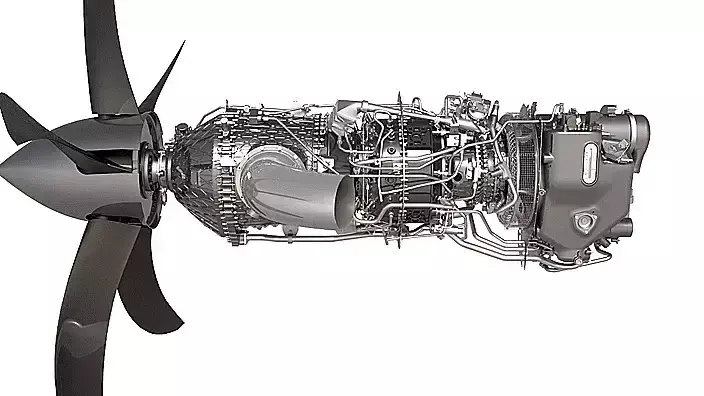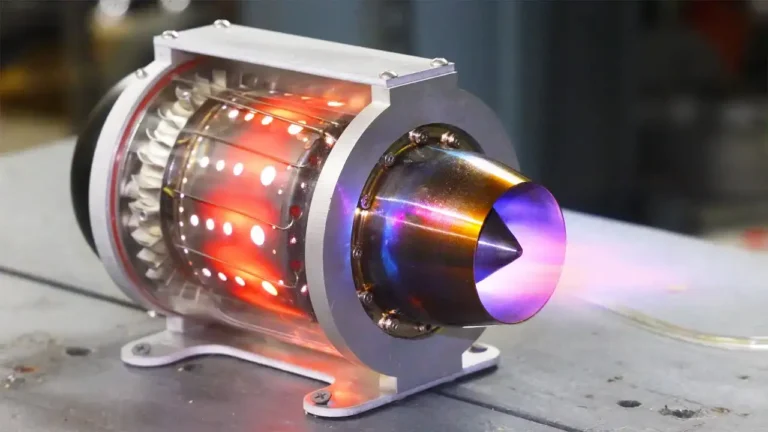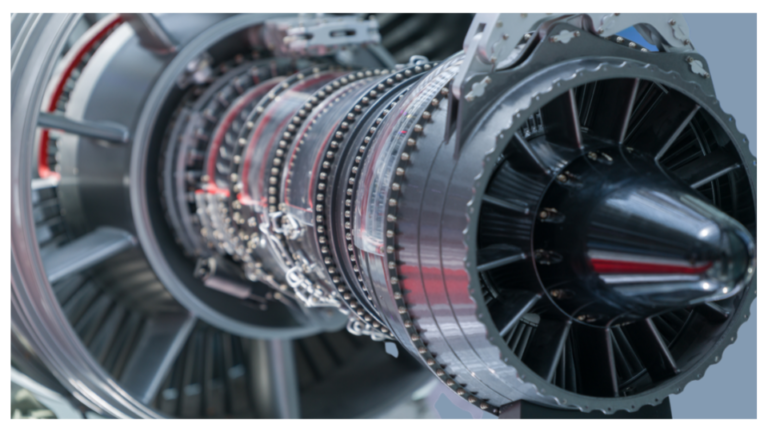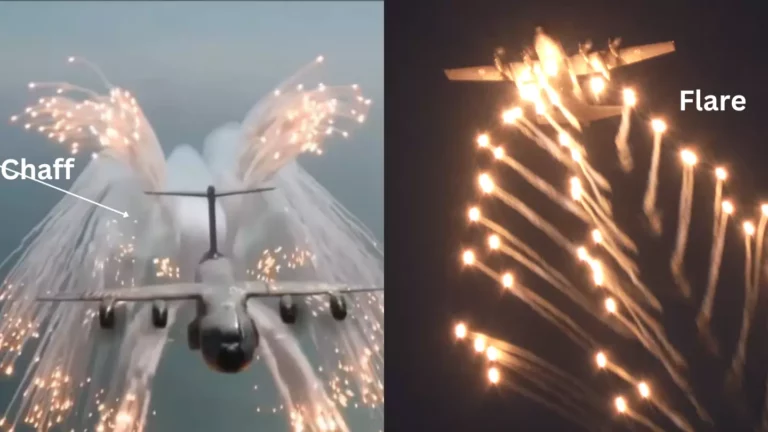What is a Turboprop Engine, And How Does it work?
Description:
A turboprop engine is a variant of a jet engine that has been optimized to drive a propeller. Turboprop engines are popular on a wide range of aircraft, from 50+ seat passenger planes to single-pilot crop dusters. In general, turboprop engines provide a safe and efficient way to travel regionally.

Turboprop engines are most efficient at low to mid altitudes, making them ideal for regional travel. They are also much quieter than traditional jet engines, making them more pleasant for passengers. Additionally, turboprop engines are known for being reliable and easy to maintain.
A turboprop engine uses the same principles as a turbojet to produce energy by incorporating a compressor, combustor, and turbine within the engine’s gas generator.
The primary difference between the turboprop and the turbojet is that additional turbines, a power shaft, and a reduction gearbox have been incorporated into the design to drive the propeller.
The gearbox may be driven by either: 1)the same turbines and shaft that drive the engine compressor (mechanically linking propeller & engine); or 2) separate turbines with power turbine driving concentric, mechanically isolated shaft to power gearbox (referred to as “free power turbine” or “free turbine” engines). In either case, almost all energy from the exhaust stream is extracted, using some of it to power the engine compressor & rest drives the propeller.
Turboprop engines get their name from the combination of a turbine (which powers the engine) and a propeller (which propels the plane). The turbine is powered by burning fuel, which turns the turbine’s blades. The spinning turbine then powers the propeller, which moves the plane through the air.
How Turboprop Engines Work
- Turboprop uses a gas turbine to turn a propeller. As mentioned, propeller engines develop thrust by moving a large mass of air through a small change in velocity.
- The engine sucks the air with the help of air-intake from the atmosphere and sends it into the engine’s compressor section.
- As the air is compressed according to the requirements, the compressor sends it into the combustion chamber.
- When compressed air is forced into the combustion chamber, a fuel injector sprays or injects fuel into the chamber. The fuel mixes with the air, and due to the high compression of the air, the mixture ignites. The ignition process increases the temperature and internal energy of the mixture.
- The energy (expanded gases) from the combustion chamber strikes the turbine blades, which causes the turbine to rotate. The blades extract the maximum power exhaust gases, and a very small amount of exhaust gas energy is discharged into the atmosphere.
- The compressor receives energy from the turbine, and the compressor further drives the propeller. As the engine propeller starts rotating, it generates thrust, which helps the airplane to move forward.
Let’s learn about how Turboprop engines work in details.
Reverse Flow
Unlike turbofan or turbojet aircraft, air moves through turboprops like the PT6 by reverse flow. In other words, large air intakes underneath or beside the propeller scoop air into the intakes and move it backwards towards the engine firewall. Upon reaching the aft limit of the intake, the air makes a 180 degree turn back towards the front of the aircraft.
In addition to that, air reverses direction again when it reaches the combustor, allowing for a shorter, more compact engine.
Turboprop engines are very efficient at lower speeds and altitudes because they are able to extract more power from the exhaust gases than a turbojet engine. This is due to the fact that the exhaust gases from a turboprop engine strike the blades of the propeller directly, rather than being ejected out the back of the engine as in a turbojet.

Note: Most of large turboprops have the hot section on the rear of the engine so the exhaust is on the far aft of the engine.
Compression
The first compressor stage use axial flow to speed up and compress the air. This process uses a series of airfoil-shaped spinning blades that cause the air to move through the engine in a direction parallel to the shaft of the engine. Each subsequent stage further compresses the air as the air moves through the compressor.
Between each set of compressor blades are non-moving airfoil-shaped blades called ‘stators.’ These stators (also called stator vanes) increase the pressure of the air by converting the rotational energy into static pressure. The stators also prepare the air to enter the next set of rotating blades, increasing the pressure.
After passing the final axial flow compressor stage, the air moves to a centrifugal flow compressor stage. Air is thrown outwards, from the engine core and towards the combustion chambers. This change in direction causes the air to make another 90-degree turn.
Diffuser
The diffuser is one key component of the gas turbine combustor, following the compressor. Its primary function is to slow down the compressor’s airflow, promoting efficient combustion and avoiding large total pressure losses.
The diffuser is designed to slow down the air from the compressor, making it easier to ignite. The dome and swirler add turbulence to the air so it can more easily mix with the fuel. The fuel injector nozzles are designed to spray fuel into the air, creating a fuel/air mixture that can be ignited.
Combustion
The combustor or combustion chamber is where the combustion process takes place. As air exits the compressor and enters the combustor, it is mixed with fuel and ignited. While the process may sound simple, it is actually quite complex. The combustor needs to maintain stable, constant fuel/air mixture combustion while the air moves through the combustor at a high rate.
The igniters are the last stages in the combustion process, similar to the spark plugs on a car or piston-engine plane. Once ignited, the fire is self-sustaining, and any remaining igniters are turned off. These igniters are sometimes used as backups in bad weather and icing conditions.
Turbine
Once the air passes the combustor, it strikes to turbine blades, the turbine is a series of airfoil-shaped blades that are similar to the blades of the compressor; they extract energy from the hot gases coming from combustion chamber. This power spin the turbine wheel around in a circle and turning the engine shaft it’s connected to. This is the same shaft to which the compressor section and all engine-driven accessories are connected.
Reduction Gearbox

The gearbox is part of the turboprops transmission and is linked to the same shaft that runs the compressor. It links the engine and propeller, and it is used to control the RPM. The higher the rpm output, the faster the propellers will turn.
If a reduction gearbox is not installed, the propeller will turn at a high or constant RPM, and the engine will consume a large amount of fuel. Reducing these speeds on a speed reducer gearbox improves fuel efficiency.
Propeller
The turbine sends rotational power to the compressor, which turns and sends its energy to the reduction gearbox. The propeller is connected to the gearbox. The speed of the propeller is controlled with the reduction gearbox. The propeller gets power and thus produces thrust, which pushes the air backward. Due to this, the airplane is able to move forward.
Advantages and Disadvantages of Turboprop
The advantages and disadvantages of the turboprop engines are given below:
Pros of Turboprop Engines
Cons of Turboprop Engines
Pros of Turboprop Engines
- Mostly these engines have less weight than turbojet engines.
- Turboprop Engines are the most fuel efficient when they fly below 400 knots.
- The turboprop airplane has the capability to land on non-concrete and shorter runways.
- A turboprop has a low cost as compared to turbojet engines.
- They are extremely reliable.
- Low maintenance cost.
Cons of Turboprop Engines
- These engines have low cruising speeds as compared to Turbojet Engines.
- Aircraft with Turboprop Engines are not good for high altitudes.
- Due to slow speed, the flight take longer time.
- These engines are not best for longer distance travel.
- Due to the working height, climatic turbulence.
Conclusion:
Overall, turboprop engines are an excellent choice for aircraft that will be flying at lower speeds and altitudes. They are much more fuel-efficient than their turbojet counterparts and require significantly less runway for takeoff and landing. However, they are not as well suited for higher-speed flight and most turboprop aircraft have a maximum speed of around 600 mph (960 km/h).



